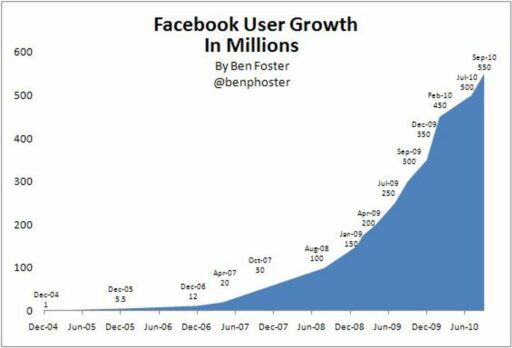Table of Contents
In today’s data-driven landscape, the ability to effectively acquire and manage data is paramount for any organization aiming to stay competitive. The article ‘Innovative Strategies for Effective Data Acquisition’ delves into the various methodologies and practices that can enhance the efficiency and precision of data acquisition processes. From crafting a tailored data acquisition blueprint to leveraging advanced technologies and operational planning, this article provides insights into how organizations can optimize their data acquisition strategies to yield actionable insights and drive strategic innovation.
Key Takeaways
- A strategic data acquisition plan prioritizes the volume, value, velocity, and variety of data, aligning with core business needs for maximum impact.
- Engaging stakeholders and reverse engineering the strategy ensures that the data collected is actionable and directly contributes to business objectives.
- Digital platforms are critical for customer acquisition, and a stepwise approach to the digital customer lifecycle encourages sustained engagement and retention.
- Advanced technologies such as AI and ML play a pivotal role in optimizing data management and act as enablers in risk management and process improvement.
- Operational planning for data acquisition must consider infrastructure and software needs, avoiding the collection of non-impactful vanity metrics.
Crafting a Data Acquisition Blueprint
Identifying Core Business Needs
To lay the foundation for a robust data acquisition strategy, it is essential to begin with the end in mind. Understanding the specific problems and objectives your business aims to address with data will guide the creation of a tailored approach that aligns with your company’s priorities.
A clear focus on the core business needs ensures that the data strategy is not just a collection of tactics, but a coherent part of the overall business strategy.
The following points are critical when identifying core business needs:
- Get clear on the problem you are solving.
- Ensure the strategy is rooted in the business’s core needs.
- Categorize business value into growth, risk avoidance, and efficiency gains.
- Avoid the pitfalls of vanity metrics and focus on what truly matters.
By addressing these areas, you can construct a data acquisition blueprint that not only serves immediate needs but also positions your business for future growth and innovation.
Engaging Key Stakeholders
Engaging key stakeholders is a critical step in the data acquisition process. Stakeholders include management, shareholders, employees, customers, suppliers, government entities, and the community at large. Their influence on business operations is significant, and their feedback can shape strategic decisions. It is essential to identify who these stakeholders are and understand their impact on your business.
Effective engagement with stakeholders requires clear communication, alignment of goals, fostering trust, and collaborative work to address feedback and adapt strategies.
Knowing who will be reading and using the data is crucial. Design your data acquisition strategy to be accessible for these key stakeholders. This may involve mapping out your strategy in reverse, starting with the desired goal and considering the stakeholders’ needs and preferences. Here’s a simple list to ensure you’re on the right track:
- Identify all relevant stakeholders.
- Assess how each group may affect your business.
- Determine opportunities to engage, influence, or serve these groups.
- Prioritize stakeholder needs in your data strategy.
Remember, the clarity of your data strategy and its alignment with stakeholder interests can greatly enhance the effectiveness of your data acquisition efforts.
Reverse Engineering the Strategy
Once the desired outcomes and key stakeholders are identified, reverse engineering the strategy becomes a pivotal step. This approach ensures that the data collected is not only relevant but actionable, aligning with the core business needs.
By mapping out the strategy from its end goals to the present, organizations can create a clear and agile plan that adapts to feedback and avoids the pitfalls of rigidity. This method prevents the stagnation that has led to the downfall of companies like BlackBerry, which failed to adapt to emerging technologies.
The process of reverse engineering a data acquisition strategy can be broken down into several key steps:
- Get clear on the problem you are solving.
- Ensure the strategy aligns with core business needs.
- Engage with key stakeholders throughout the process.
- Conduct thorough market research.
- Build a flexible data acquisition plan.
- Utilize the tools at your disposal effectively.
- Focus on metrics that drive meaningful insights.
- Establish a robust operational plan.
This structured approach not only clarifies the path to achieving business objectives but also sets the stage for continuous improvement and innovation.
Harnessing Digital Platforms for Customer Acquisition

Understanding the Digital Customer Lifecycle
The digital customer lifecycle is a framework that outlines the journey a customer takes with a brand, from initial awareness to post-purchase engagement. Understanding this lifecycle is pivotal for crafting strategies that align with customer behaviors and expectations at each stage.
- Awareness: The customer becomes aware of the brand or product.
- Consideration: The customer evaluates the brand’s value proposition.
- Conversion: The customer makes a purchase decision.
- Retention: The brand maintains a relationship to encourage repeat purchases.
- Advocacy: The customer becomes a brand advocate, sharing their positive experiences.
By analyzing the customer journey, businesses can identify key touchpoints and optimize their digital marketing efforts to enhance customer acquisition and retention.
Effective customer lifecycle management (CLM) involves not just understanding these stages but actively engaging customers throughout. It’s about creating a seamless experience that nurtures the customer’s path to purchase and beyond.
Implementing Stepwise Digital Strategies
In the quest to establish a strong digital presence, implementing stepwise digital strategies is crucial for methodical progress and measurable success. Begin by setting clear, achievable goals that align with your overall business objectives. Then, break down the process into manageable steps to ensure each stage is executed effectively.
- Step 1: Analyze your target audience and their digital behavior.
- Step 2: Develop a content strategy that resonates with your audience.
- Step 3: Optimize your online platforms for user engagement and SEO.
- Step 4: Utilize social media to expand reach and foster community.
- Step 5: Continuously measure and refine your strategy based on data insights.
By focusing on a stepwise approach, businesses can adapt to the digital landscape’s changes while maintaining a clear path toward their acquisition goals. This methodical progression allows for the fine-tuning of strategies, ensuring that each step contributes to a stronger digital footprint and a growing customer base.
Remember, the digital world is dynamic, and your strategies should evolve accordingly. Regularly revisiting and updating your steps will help you stay ahead of the curve and maintain a competitive edge.
Maintaining Customer Engagement and Retention
In the digital marketplace, maintaining customer engagement and retention is crucial for long-term success. It is important to continually monitor and analyze the data to optimize your tactics and ensure success in acquiring and retaining valuable customers.
However, the key to sustained success lies in continuously analyzing and refining your strategies to adapt to the ever-evolving digital landscape. The goal is not just to acquire new customers, but to create meaningful relationships that foster loyalty and drive long-term success.
Fostering longer-term relationships with customers is pivotal. Through continuous monitoring and analyzing the data, businesses can cultivate loyalty and advocacy, which are essential for a thriving digital presence.
Additionally, retargeting campaigns can be employed to re-engage potential customers who have shown interest in the business. For example, displaying ads for abandoned cart items can remind users to complete their purchase, maximizing ad spend efficiency and improving the overall effectiveness of customer acquisition efforts.
Utilizing Data Analytics for Strategic Innovation

Defining the Problem and Solution Space
Before diving into data acquisition, it is crucial to get clear on the problem you are solving. This clarity acts as a compass for the entire data strategy, ensuring that every piece of data collected is relevant and purposeful. Kamyar K.S of World Consulting Group emphasizes the importance of setting a clear business goal and determining how success will be measured. By doing so, you can streamline your focus to acquire only the data that will inform your strategic decisions.
Sasha Matviienko of Citadel advocates for beginning with the end in mind. Understanding the exact problem helps in formulating the right questions and setting additional requirements for data analysis. For instance, if certain products or services are of higher priority, it may be necessary to have the functionality to analyze these separately.
The process of defining the problem and solution space is not a one-time effort but an ongoing exercise that shapes every aspect of your data strategy. It influences the choice of business intelligence software, the design of workflows, and the strategic decisions that drive productivity and growth.
Here is a simple list to guide the initial phase of defining the problem and solution space:
- Get clear on the problem you are solving
- Ensure your strategy aligns with core business needs
- Identify key stakeholders
- Conduct market research
- Reverse engineer your strategy
- Build a data acquisition plan
- Explore possibilities with current tools
- Focus on metrics that matter
- Avoid vanity metrics
- Establish operational planning
Prioritizing Actionable Data Collection
In the realm of data acquisition, prioritizing actionable data collection is paramount. This ensures that the data gathered is not only relevant but also drives meaningful insights and decisions. To achieve this, one must focus on the metrics that matter the most, avoiding the common trap of data hoarding which can lead to analysis paralysis.
By concentrating on actionable data, organizations can streamline their analytics strategy, ensuring that the data collected is impactful and stored appropriately.
Here are key considerations for prioritizing actionable data:
- Assess the current situation and build a strategy that is feasible now, while planning for future enhancements.
- Evaluate the volume, value, velocity, and variety of data to ensure a comprehensive flow into the analytics pipeline.
- Develop a data acquisition plan that aligns with strategic business objectives, ensuring that every piece of data has a purpose.
Remember, a well-crafted data acquisition plan is a strategic asset that underpins a successful analytics strategy. It is essential to build your plan with a clear focus on acquiring data that is not just abundant but also aligned with your strategic goals.
Leveraging Metrics for Continuous Improvement
In the realm of strategic innovation, metrics serve as the compass guiding businesses towards their goals. By establishing a robust KPI/metric model, organizations can maintain a clear line of sight from high-level performance indicators, such as revenue and EBITDA, to the operational metrics that underpin them, including customer lifetime value and cost of goods sold. This model not only reflects financial outcomes but also encompasses sustainability and ESG metrics, ensuring a holistic approach to business growth.
Metrics provide a narrative of past performance and a forecast for future endeavors. They are indispensable in diagnosing the health of a business and in prescribing the necessary strategic adjustments. By focusing on metrics that matter, companies can avoid the trap of vanity metrics and instead concentrate on data that propels them forward.
For example, analyzing the conversion rate sheds light on potential enhancements within the sales funnel, while tracking customer lifetime value offers insights into the profitability of customer segments. These actionable metrics are pivotal in shaping decisions and optimizing marketing strategies. To truly excel, businesses must integrate these strategies into their daily processes, ensuring that data-driven decision-making becomes a core aspect of their operational planning.
Incorporating Advanced Technologies in Data Management

Exploring AI and ML in Data Optimization
The integration of Artificial Intelligence (AI) and Machine Learning (ML) into data optimization processes marks a significant leap forward in data management. AI-based preprocessing tools have shown to outperform traditional algorithms by offering higher accuracy, reduced user effort, and improved reproducibility. These tools are capable of learning from data without the need for human-coded rules, allowing for the discovery of subtle, unbiased patterns.
AI and ML are not just tools but transformative forces that reshape the way we approach data optimization. Their ability to process and analyze large volumes of data far exceeds human capabilities, leading to more efficient and effective data management strategies.
AI-driven protocol assessment, as utilized by platforms like Trials.ai, exemplifies the practical application of these technologies. By integrating best industry practices, AI can enhance protocol design and automate the development of downstream systems. The key benefits include:
- Generation of unifying hypotheses from big data
- Benchmarking against industry standards
- Streamlining protocol design
While the potential of AI in experimental design, particularly in fields like metabolomics, is still unfolding, the promise of achieving new levels of precision and insight is undeniable. However, it is crucial to maintain oversight on AI system inputs and ensure thoroughness in model reasoning to prevent the propagation of errors or biases.
Innovations as Enablers in Risk Management
In the realm of data management, innovations act as pivotal enablers in risk management, transforming the landscape of clinical trials and other data-intensive fields. By integrating advanced technologies such as AI and ML, organizations can optimize processes and improve data quality while reducing costs.
- Automation and innovative tools streamline data management tasks, leading to more efficient workflows.
- Risk-based methodologies allow for the design and execution of more effective data governance frameworks.
- Customized metrics support the reduction of subjectivity and systematic risks, enabling a more proportionate response to data challenges.
Embracing quality risk management means recognizing that data quality is about being fit-for-purpose rather than merely error-free. This shift in perspective is crucial for allocating resources effectively and avoiding the trap of no-value-add activities.
The integration of data science and innovations into risk-based frameworks enhances the intelligence of these systems. Real-time access to data, reduced manual efforts, and improved data quality are just a few of the benefits that come with these advancements. As the complexity of data grows, these innovations ensure that data management systems can adapt and maintain their efficacy.
Adapting to Complex Data and Trial Designs
The landscape of clinical trials is rapidly evolving, with complex trial designs leading to a surge in data endpoints, procedures, and analysis. This complexity necessitates innovative approaches to data management that can handle the intricacies of modern trials, including adaptive studies.
To address these challenges, a multi-faceted strategy is essential:
- Streamlining data handovers to enhance data quality
- Utilizing risk-based methodologies to improve design efficiencies
- Integrating AI and ML for advanced data analysis and safety monitoring
Embracing these strategies ensures that the ever-increasing complexity of clinical trials is not only managed but turned into an opportunity for greater innovation and insight.
As the volume and variety of data sources expand, it’s crucial to adapt data management practices to include non-CRF sources such as wearables, smartphone-connected devices, and other novel data collection tools. This adaptation allows for a more comprehensive understanding of patient experiences and outcomes.
Operational Planning for Data Acquisition

Assessing Infrastructure and Software Needs
When embarking on a data acquisition journey, assessing the infrastructure and software needs is a critical step. This entails setting up the necessary infrastructure, deploying technologies, and configuring systems to capture and store the data securely. It is essential to understand the frequency of data capture and storage as it directly impacts the scale of infrastructure and type of software required.
A robust infrastructure not only supports operations and scalability but also ensures effective security measures. It’s imperative to research what’s possible with the tools at your disposal to maximize your data acquisition efforts.
The following list outlines key considerations when assessing infrastructure and software needs:
- Determine the volume and velocity of data to be captured
- Evaluate the compatibility of software with existing systems
- Research the scalability options for future growth
- Ensure compliance with data security and privacy standards
- Consider the integration of advanced technologies like blockchain and cloud computing
By meticulously planning the infrastructure and software aspects, organizations can avoid common pitfalls and set the stage for successful data acquisition strategies.
Scheduling Data Capture and Storage
Effective data acquisition is not only about what data to capture but also about when and how often to capture it. Scheduling data capture and storage is crucial to ensure that the data remains relevant and that the infrastructure is not overwhelmed. It’s essential to balance the frequency of data collection with the available storage capacity and processing power.
The schedule for data capture should align with the strategic goals of the organization, ensuring that data is available when needed for decision-making processes.
Considerations for scheduling include:
- Timelines: From protocol finalization to database release, and from the last patient visit to database lock.
- Data Availability: Potential delays in data transfer, entry lags, and handling of missing data.
- Data Quality: Monitoring data correction rates, uncoded terms, and abnormal values.
- Process Performance: Evaluating the number of post-production updates, database unlocks, and the use of global standard data collection modules.
By meticulously planning the data capture and storage schedule, organizations can avoid the pitfalls of data overflow and ensure that the most impactful data is collected and stored efficiently.
Avoiding the Pitfalls of Vanity Metrics
In the realm of data acquisition, it’s crucial to steer clear of vanity metrics that may look impressive but fail to align with business objectives. Vanity metrics are often the simplest data points to collect; however, they can be deceptive, leading organizations to believe they are on the path to success when, in reality, they are not contributing to strategic goals.
To avoid struggling with vanity metrics, prioritize quality over quantity by narrowing it down to the metrics your organization actually needs. That way, you can ensure that your data acquisition efforts are not just a numbers game but a strategic endeavor that drives real value.
It is essential to differentiate between metrics that merely inflate a report and those that provide actionable insights. Here’s a list of considerations to help maintain focus on the metrics that matter:
- Distinguish between data that looks good and data that is good for the business.
- Implement attribution tracking for ROI to measure marketing effectiveness.
- Concentrate on metrics that directly impact the bottom line, such as conversion rates and revenue.
By embedding these practices into your operational planning and daily processes, you can avoid the common trap of overvaluing metrics that do not move the needle towards achieving business success.
Conclusion
In conclusion, the journey to effective data acquisition is multifaceted, requiring a clear understanding of the problem, alignment with core business needs, and the engagement of key stakeholders. As emphasized by experts like Patrick Crane, prioritizing data acquisition is crucial for a robust analytics strategy. Innovations in AI, ML, and automation serve as enablers for risk-based data management, ensuring that data is not only collected but is actionable and drives continuous improvement. By following a stepwise approach, businesses can build a data acquisition plan that captures valuable data at the right volume, velocity, and variety. This strategic asset, when managed well, can fine-tune digital acquisition efforts, leading to better customer retention and a stronger digital presence. Remember, it’s not just about collecting data, but about capturing the right data and using it to inform and innovate within your organization.
Frequently Asked Questions
What are the key components of an effective data acquisition plan?
An effective data acquisition plan should prioritize the volume, value, velocity, and variety of data. It must be comprehensive and efficient, ensuring a constant flow of valuable data for the analytics process.
How can innovations in AI and ML enhance data management?
AI and ML can optimize processes, improve data quality, and reduce costs, setting a foundation for continuous process improvement and risk-based data management.
What is the importance of a stepwise approach to digital customer acquisition?
A stepwise approach is crucial for attracting and retaining a robust customer base in the digital landscape, ensuring that acquisition efforts are effective and customers remain engaged.
How do you ensure the data collected is actionable?
To ensure collected data is actionable, it’s important to clearly define the problem you’re solving, base your strategy on core business needs, and focus on metrics that drive meaningful insights.
What should be considered when planning data capture and storage?
When planning data capture and storage, consider the frequency of data capture, the infrastructure and software required for real-time or near real-time data collection, and the complexity of data and trial designs.
Why is it important to avoid vanity metrics?
Vanity metrics can be misleading and do not necessarily correlate with the key drivers of business success. Focusing on metrics that matter most ensures that the data strategy is aligned with business goals.





